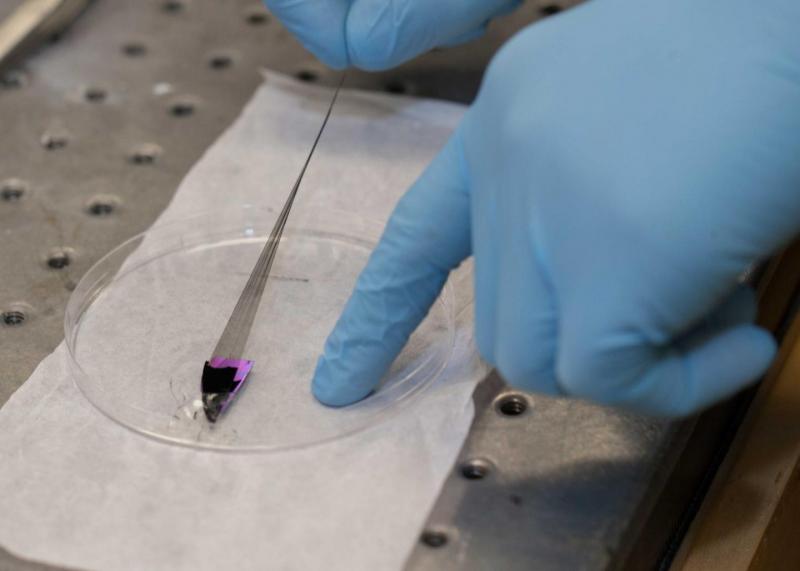CARBON NANOTUBES COULD PROVIDE THE MILITARY WITH BATTERY-POWER IN TEXTILES

Carbon nanotubes could lead to clothing that can double as a battery, a discovery that could be particularly useful for the military.
A team from the University of Cincinnati—in a partnership with the Wright-Patterson Air force base—are working to take advantage of the properties of carbon nanotubes in developing new applications for soldiers in the field.
“The major challenge is translating these beautiful properties to take advantage of their strength, conductivity and heat resistance,” UC professor Vesselin Shanov, who co-directs UC’s Nanoworld Laboratories, said in a statement.
Graduate student Mark Haase has worked with Air Force researchers over the past year to find applications for carbon nanotubes using X-ray computer tomography to analyze samples.
“This pushes us to work in groups and to specialize,” Haase said in a statement. “These are the same dynamics we see in corporate research and industry. Engineering is a group activity these days so we can take advantage of that.”
The researchers used chemical vapor deposition to grow the carbon nanotubes on silicon wafers the size of a quarter under heat in a vacuum chamber.
“Each particle has a nucleation point,” Haase said. “Colloquially, we can call it a seed. Our carbon-containing gas is introduced into the reactor. When the carbon gas interacts with our ‘seed,’ it breaks down and re-forms on the surface. We let it grow until it reaches the size we want.”

UC’s Nanoworld Lab set a world record in 2007 by growing a nanotube that stretched nearly two centimeters, the longest carbon nanotube array produced in a lab at the time. The lab can currently create nanotubes that are substantially longer.
They were able to stretch the little fibrous square over an industrial spool in the lab to convert the sheet of carbon to a spun thread that can be woven into textiles.
“It’s exactly like a textile,” Shanov said. “We can assemble them like a machine thread and use them in applications ranging from sensors to track heavy metals in water or energy storage devices, including super capacitors and batteries.”
This ultimately could lead to a much lighter load for soldiers in battle.
“As much as one-third of the weight they carry is just batteries to power all of their equipment,” Haase said. “So even if we can shave a little off that, it’s a big advantage for them in the field.”
The study was published in Materials Research Express.
Full article by Kenny Walter – Digital Reporter @RandMagazine here.
